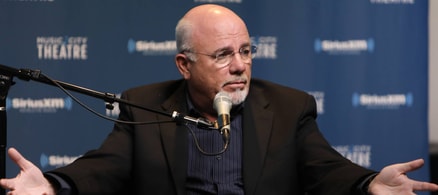Money management tips
1. Create a monthly budget
If you’re not budgeting, start now. This is crucial for saving money and preventing your expenses from spiralling out of control. Make budgeting your money mantra. Here is how your after-tax income should (roughly) be allocated:
Fixed Costs (50-60%)
These costs should be in the range of 50 to 60 percent. This category includes all charges that don’t deviate considerably monthly, such as your cellphone bill, groceries, utilities, gas, rent, mortgage, car loans and other payments.
Investments (10%)
This should be around 10 percent of your earnings. As your savings grow, you must invest the amount, so your wealth expands with the passing time. This investment will include any contributions made by your company.
Savings (5-10%)
This category should range between 5 and 10 percent of your income. It will allow you to pay for gifts, vacations and major purchases like smartphones, computers, laptops and other necessary items. This amount should also include an emergency fund that’ll provide at least six months of necessities if you suddenly lose your income.
Fun Spending (20-35%)
Allocate 20 to 35 percent of your money towards guilt-free spending. You can spend this amount on movies, dining, shopping and other leisure activities, which are often seen as unnecessary expenses. Allocating a reasonable amount towards guilt-free spending is necessary to improve the quality of your life. Your life doesn’t have to become dull or monotonous just because you’re saving money for retirement.
2. Understand your expenses
Once you’ve made a budget, keep track of your spending, especially all your variable expenses. For this, you must retain all of your receipts and note down expenses as they happen. This may seem like an intricate process, but it doesn’t have to be! Nowadays, there are plenty of budgeting apps that can track your spending. We’re big fans of YNAB (You Need a Budget) – one of the most popular personal budgeting apps. It connects to your financial accounts and tracks your budget, debt and savings. According to YNAB, new budgeters save on average $600 by month two and more than $6,000 their first year. You can also try the app free for 34 days.
Tracking your expenses is crucial, so you know where your money went and how much money was spent on what. That way, you’ll have accurate monthly spending figures for all of your variable expenses. You’ll also have a clearer idea of how much money you can stuff away in savings.
Start your free trial with YNAB
3. Start investing
Avoid stashing all your cash into a savings account, which typically pays a meagre return of 1 to 2 percent. This represents lost earnings and a significant loss over the long term. You can easily earn much more by investing your funds in a more lucrative avenue, such as stocks, which have historically yielded 12 percent on average. A regular savings account will also erode the actual value of your money with time because it can’t keep up with inflation.
The bottom line? You’re better off making smart investments so that through the magic of compound interest, your money pile keeps multiplying and enriches you over time. Maintain a portfolio where your money is spread across different categories like real estate, bonds, stocks, and other asset classes. If done correctly, this will give you the optimal combination of minimized risk and high earnings. This is the secret to growing your wealth.
One way to cut costs and earn more money is by using a discount brokerage. Also known as an “online broker,” it’s a great option for DIY investors who want the flexibility to build their own portfolio and take charge of their money without paying the high fees attached to actively managed funds. Our top choice is Questrade, which offers some of the lowest-cost options out there. With no annual fees or fees for purchasing ETFs, you can essentially build an ETF portfolio for $0.
Feeling overwhelmed? Luckily, rapid advancements in technology have created new opportunities for investors who are new to investing or just don’t have time to manage their portfolios. Thanks to FinTech, you can now benefit from robo-advisors to manage your investments. Robo-advisors are algorithm-driven investment platforms. When you sign up for a robo-advisor, you’ll share your investment goals, risk tolerance, the required rate of return and other factors. The robo-advisor will take these requirements into account, then create an optimal portfolio and manage it automatically.
Robo advisors cost less than human investment advisors. So you’ll pay fewer fees for this automated investment service. This is ideal if you’ve just started saving and don’t have enough investments to justify a pricey financial advisor. To help you make a decision about which to robo advisor choose, you can also read about The best robo-advisors in Canada.
Start investing with Questrade
4. Diversify your investment portfolio
Once you start investing, your next step is to create a diversified portfolio with the right blend of risk and return. With a highly diversified portfolio, your savings will be spread across a range of assets, which includes real estate, commodities, bonds, equity, cash and more.
The reason you must diversify your portfolio is that it’s the best way to counter volatility and risk. If one asset class is underperforming (such as stocks, for instance), then the other asset classes will likely perform better (for instance, bonds). A diversified portfolio is one of the best ways of ensuring stable investment income.
So how do you create a diversified portfolio?
The first step is to consider your investment goals. Look at different factors like your risk appetite, required average rate of return, target savings size, and other aspects.
Then, study the risk-return profiles of different asset classes. Generally, risk varies proportionately with the return. So although stocks provide high returns, they also have a high risk. Bonds, on the other hand, offer low risk and low yields.
If you’re new to investing and are more interested in keeping your savings safe, then invest more in bonds. Then, study up on investing, and as your knowledge increases, you can then increase the stocks in your portfolio.
If you need a bit of hand-holding with this, many robo advisors offer some degree of financial planning as part of their package. For instance, if you’re a Wealthsimple Black client, you have access to goal-based financial planning with an experienced portfolio manager. Likewise, Wealthsimple Generation clients have access to in-depth financial planning and a team of experts that will even design a personalized financial report customized to your goals. But regardless of tier, every Wealthsimple client has unlimited access to human experts providing financial advice.
5. Save 10 to 15 percent for retirement by saving regularly
“Pay yourself first” is one of the key principles of personal finance and is the easiest way to achieve financial independence. The idea is simple: when you get your paycheque, move a fixed percentage of your income into a TSFA or RRSP investing or savings account on a weekly, bi-weekly, or monthly basis.
This method has several key benefits. By saving first, you’re prioritizing savings over all other expenditures. This is much better than spending first and investing the remaining amount, which is often much smaller. You can save consistently and meet your savings target by a specific date or the start of your retirement.
Since a fixed percentage is immediately transferred into an investing or high-interest savings account(and can’t be quickly accessed), it’s less likely you’ll spend it. That way, you can succeed in saving more money every month.
6. Set up an automated savings plan
To make saving your top priority, consider setting up automated, recurring transfers from your bank account directly into your investment account. If it’s an investment account, you can even indicate how you want those funds distributed. For instance, a certain amount could go right into a specific index fund. On the other hand, if you’re using a robo advisor, it should disperse the funds for you automatically (a lot easier).
Several robo advisors in Canada, including Wealthsimple or Nest Wealth, allow you to schedule automatic deposits into your investment account without any additional fees. With a robo advisor like Wealthsimple, you can set up a bi-monthly, month-to-month, or per-week program to deposit money. Then you just sit back and watch your wealth grow.
Get started with Wealthsimple Invest
7. Slash unnecessary expenses and save $10 a day
The numbers don’t lie and analyzing your budget regularly can help you figure out where you can cut costs. Most often, you’ll find that you’re overspending on unnecessary items and activities like dining at expensive restaurants or buying designer clothes.
Giving up or reducing these expenses can be challenging and requires some serious discipline. But one easy way to do this is to save $10/day. It may sound overly simplistic, but think about it: every dollar you save and invest now matters. If you cut down your expenses by just $10 a day, here is what you’ll save over three decades.
Amount saved = $10 x 365 days x 30 years = $109,550
Remember that the actual savings will be much higher if you convert your daily savings to stocks and bonds.
Say you put that into an investment account that yields a modest 6 percent per year. That money would grow to over $300,000 after 30 years.
Crazy, right?! This simple calculation should motivate you to minimize your monthly expenses and save more for your future. The bottom line is that even a small amount saved daily can turn into a huge amount in the long run.
8. Open a low or no-fee chequing account
Yes, investing is important, but you still need both a chequing account for everyday expenses. You can choose either a bank or a credit union to keep your money safe but do your homework and find one that best suit your circumstances. Do you have a lot of transactions every month? Are paying no fees a top priority? Is having a physical branch location important or are you cool with banking online? You’ll also want to check out the services and features offered, such as a credit card, debit card, online account, paper cheques, and ATM access.
All of these are important questions to ask yourself, but to help make the decision easier, consider going with one of the best online banks in Canada. Since they don’t have physical branches, the cost of their service is low, and their savings accounts also yield decent interest. Traditional banks have to spend more on physical branches, and hence their fees are usually higher while the interest offered may be lower.
But for those who prefer a brick-and-mortar bank with excellent customer service, consider the Scotiabank Preferred Package.
9. Pay your credit cards in full every month
Controlling your credit cards is a top priority, and that means paying off your balance every single month. Otherwise, you’ll build up huge debts rather than saving money. If you have a monthly credit card limit of $1,000, it doesn’t mean you have an extra $1,000 to blow each month. It just means you can borrow up to $1,000 each month, but your goal should be to pay it back by the end of the month and stay in the black. You need to have the right mindset to avoid becoming another credit card casualty. If you have a hard time exercising self-control when shopping, you could get a credit card with a low credit limit (e.g. $500 or $1000). That way, it cuts you off if you try to overspend.
If you’re having trouble keeping up with payments, think about switching to one of the best low-interest credit cards or signing up for one of the best balance transfer credit cards (some of which offer 0% interest for a limited time). It’ll save you a ton of interest and put more money back into your pocket.
10. Limit your spending
Never use your credit card on a whim. If you’re going out shopping, first determine the maximum amount you can spend (and consult your budget first!). Keep a list of all the items you intend to purchase. Do not pay more than the maximum limit on your credit card. Don’t buy anything on impulse that you don’t need.





